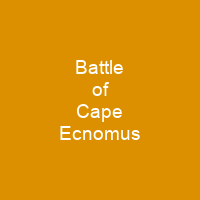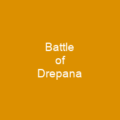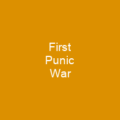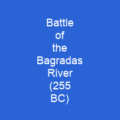The Battle of Cape Ecnomus: A Turning Point in History
Imagine a world where two great empires clashed not on land, but upon the vast expanse of the sea—this is the Battle of Cape Ecnomus, fought between Carthage and Rome during the First Punic War. This naval battle in 256 BC was more than just a clash of ships; it was a confrontation that would shape the future of both civilizations.
The Roman Fleet: A New Era in Naval Warfare
With 330 warships, each carrying around 80 legionaries, Rome’s fleet was no small force. But what made this fleet truly formidable were its ships—built using Carthaginian blueprints but with a heavier design and slower speed. The Romans had to train their oarsmen meticulously to row as a unit, giving the Carthaginians an initial edge. However, they countered by introducing the corvus, a bridge-like device that allowed Roman legionaries to board enemy ships and capture them.
The Carthaginian Fleet: A Force of Experience
The Carthaginian fleet, numbering around 350 ships with up to 290,000 crew and marines, was commanded by Hanno and Hamilcar. Their standard warship, the quinquereme, was superior in bad weather due to its heavier design. These ships had 168 oars per side, requiring experienced rowers to handle them effectively.
The Battle: A Test of Strategy and Skill
The battle began with the Carthaginians taking the initiative, but they were decisively defeated after a prolonged day of fighting. The Roman fleet moved along the Sicilian coast in a compact formation, while the Carthaginians sailed east in a single line abreast. Hamilcar staged a feigned retreat to lure the Romans into a gap, and the Carthaginian wings attacked from the flanks, targeting the Roman center and rear squadrons.
Despite their initial advantage in ship handling, the Carthaginians were offset by the Romans’ superior armor and experienced legionaries. The battle devolved into three fights: the Carthaginians attacking the Romans’ transports, Hanno’s squadron attacking the Roman rear, and Hamilcar’s squadron pursuing the Romans.
The Outcome: A Clear Victory for Rome
While the Carthaginians initially put up resistance, they were decisively defeated after their crews lost heart and fled. The Romans pursued and trapped the Carthaginian ships, leading to heavy losses for both sides. The Carthaginians suffered 50 ship surrenders, 30,000-40,000 casualties, and 64 captured ships. The Romans lost 24 ships sunk and approximately 10,000 killed.
Aftermath: A New Era in the Mediterranean
The Carthaginian fleet retreated to home waters, while Regulus successfully landed on the east coast of Sicily and besieged Aspis. The Romans eventually won the Battle of Cape Hermaeum off Africa, capturing 114 ships from the Carthaginians, while their own fleet was devastated in a storm.
The war ended with a Roman victory at the Battle of the Aegates Islands in 241 BC, leading to an agreed peace and cementing Rome’s position as the dominant military power in the western Mediterranean. The Battle of Cape Ecnomus was not just a naval battle; it was a turning point that changed the course of history.

The Battle of Cape Ecnomus was a pivotal moment in the First Punic War, marking the beginning of Rome’s naval dominance and setting the stage for its rise as a global power. This battle not only showcased the strategic brilliance of both sides but also highlighted the importance of adaptability and innovation in warfare.
You want to know more about Battle of Cape Ecnomus?
This page is based on the article Battle of Cape Ecnomus published in Wikipedia (retrieved on November 28, 2024) and was automatically summarized using artificial intelligence.







